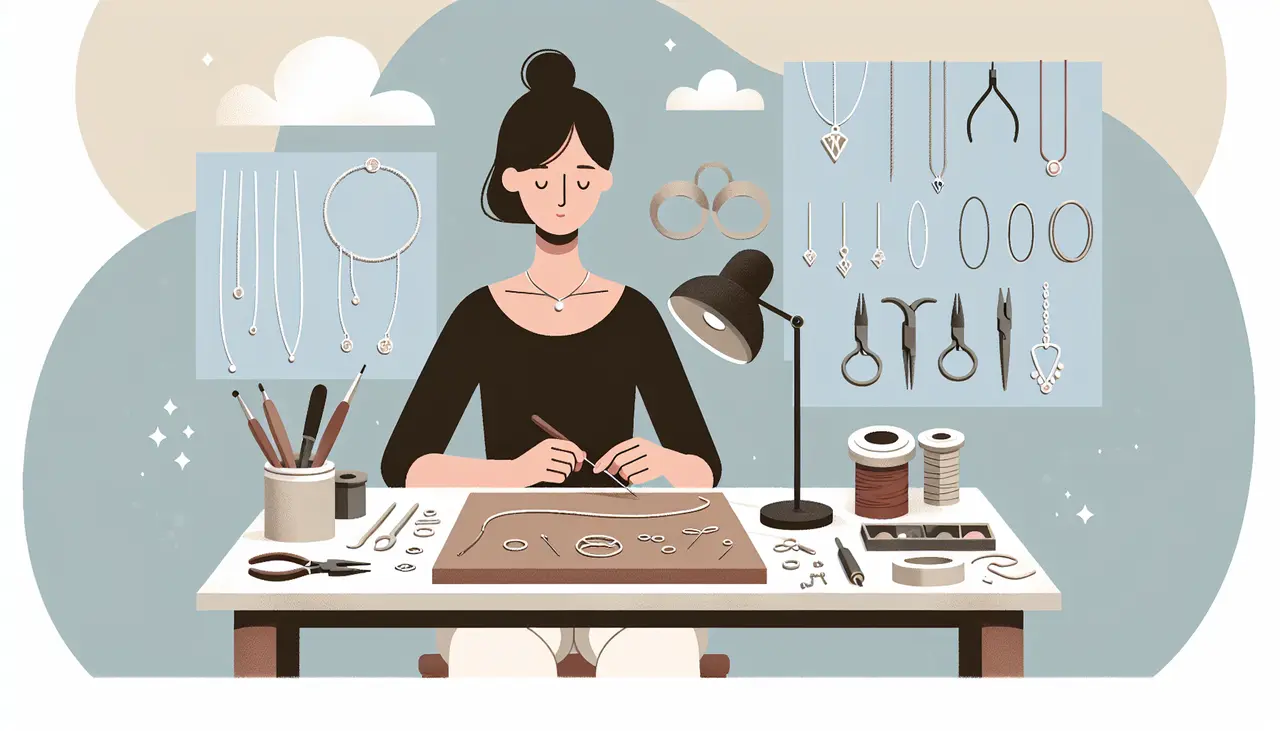Handmade jewelry holds a special allure, blending artistry with individuality. Unlike mass-produced pieces, each item tells a unique story, often steeped in tradition and craftsmanship. Join us as we explore some surprising and intriguing facts about this timeless craft.
1. The Historic Roots of Artisanal Adornments
Handmade jewelry dates back to ancient times, when early artisans crafted pieces from bones, shells, and stones to reflect personal and spiritual significance. Artisans from different cultures embedded deep symbolic meanings into their creations, such as amulets designed to ward off evil spirits. In regions like Egypt, Greece, and Rome, jewelry signified social status, while in others it served as a medium of exchange or a symbol of wealth. Over centuries, the malevolent sand of time didn’t diminish the lure of such treasures but only intensified their allure.
Jewelry was a significant part of rituals and ceremonies in various ancient cultures, and this aspect continues even today. The evolution of techniques, such as lost-wax casting and foiling, can be traced back thousands of years, highlighting not only their innovation but also their enduring relevance. As we dive deeper, it’s fascinating to uncover how the essence of these primitive designs still influences modern artisans, creating a mystical bridge between past and present.
2. The Craft of Individual Expression
Handcrafted jewelry stands as a testament to individual expression, allowing artists to infuse their personal touch into every piece they create. Each element, from the choice of material to the design, reflects the artisan’s vision and emotions. For many, the process itself is a form of meditation, a deeply personal journey that manifests in the unique styles and patterns seen in their work.
Beyond personal expression, handmade jewelry serves as a canvas for storytelling. Artisans weave narratives through their designs, often inspired by nature, emotions, and cultural heritage. This imbues the jewelry not only with beauty but also with a depth of meaning that resonates with both the creator and the wearer. The personalized nature of handmade jewelry makes it a perfect choice for those looking to express their individuality and cherish pieces that carry a story.
3. Sustainability and Ethical Practices
Many artisans prioritize sustainable materials and ethical practices, ensuring their creations are both beautiful and environmentally responsible. In recent years, there has been a growing awareness regarding the impact of jewelry production on the environment, prompting artisans to adopt eco-friendly practices. This involves sourcing materials from ethical suppliers and using recycled metals and responsibly sourced gemstones.
In addition to material sourcing, the crafting process itself can be designed to minimize environmental impact. Handmade jewelry generally involves less intensive manufacturing processes compared to mass production, significantly reducing carbon footprints. This sustainable approach not only preserves the environment but also supports fair trade, highlighting the art of jewelry making as a mindful and responsible craft.
4. The Intrigue of Imperfection
Unlike machine-made items, handmade jewelry embraces imperfections, making each piece one-of-a-kind and loaded with character. These so-called ‘flaws’ add a layer of authenticity and charm that machine perfection simply cannot replicate. The natural variations in materials such as gemstones and metals further enhance the individuality and aesthetic appeal of each piece.
This acceptance and celebration of imperfection transform each piece into an exclusive work of art, often reflecting wabi-sabi, a Japanese aesthetic worldview centered on accepting transience and imperfection. In the realm of handmade jewelry, these characteristics are appreciated not as defects but as evidence of the human touch and the artist’s journey during the creation process, offering a glimpse into the soul of the artisan.
5. The Time-Intensive Production Process
Crafting a single piece can take hours, days, or even weeks, as artisans delicately work on every intricate detail. Each step, from initial design to final polish, demands focus, skill, and patience. The meditation-like process allows artisans to pour their hearts into their work, resulting in pieces that are not only visually stunning but also emotionally resonant. This dedication to detail is what sets handmade jewelry apart from its mass-produced counterparts.
The tools and techniques employed, often passed down through generations, require mastery and precision. Whether hammering a piece of metal or setting each stone by hand, every aspect of the production process holds centuries of tradition and skill. Each finished piece reflects the time-honored craftsmanship and the diligent efforts of the artisan, highlighting the profound connection between creator and creation.
6. Cultural Narratives and Heritage
Jewelry often tells a story of cultural heritage, with designs influenced by tribal, ethnic, and historical contexts. Each piece is a tangible connection to its origin, often capturing the essence of diverse cultures and traditions. Indigenous craftspeople use traditional techniques to preserve their customs, creating jewelry that carries the weight of their cultural narratives.
These tangible legacies offer more than aesthetic beauty; they serve as vessels of history and tradition, often acting as oral histories passed down through generations. By preserving traditional methods, artisans ensure that their cultural practices continue to enchant and educate future generations, keeping the spirit of their ancestors alive within each handcrafted piece.
7. Handmade Versus Mass-Produced
Artisans often emphasize quality over quantity, a stark contrast to mass-produced jewelry, which is generally focused on rapid production. The allure of handmade jewelry lies in its exclusivity and the fact that each piece is painstakingly crafted with attention to detail. This meticulous approach guarantees not only the uniqueness but also the superior quality of handcrafted pieces.
In the world of handmade jewelry, there is no compromise on material quality. Artisans select only the finest materials, ensuring each piece is durable while maintaining its aesthetic allure. While mass-produced jewelry may flood markets with trendy designs, handmade pieces withstand the test of time, often becoming cherished heirlooms due to their enduring appeal and unparalleled craftsmanship.
8. Unique Variations and Customization
With handmade pieces, artists offer unparalleled opportunities for customization, tailoring details to match personal tastes. This one-of-a-kind personalization is a significant draw for consumers seeking bespoke adornments that are fully aligned with their individual styles and preferences.
Customization goes beyond simple aesthetic choices; it allows wearers to imbue their pieces with personal stories and meanings. Whether incorporating birthstones or meaningful symbols, handcrafted jewelry becomes a personal message, a cherished emblem of identity and memory. This bespoke nature elevates the jewelry from mere adornment to deeply personal artifacts, often celebrating milestones, achievements, or intimate journeys.
9. The Role of Technology in Modern Craft
In recent years, technology like 3D printing and CAD software have complemented traditional techniques, expanding creative possibilities for jewelers. These modern tools enable artisans to experiment with innovative designs, bringing intricate visions to life that were previously constrained by manual techniques.
Despite technological advancements, the essence of handmade jewelry remains unchanged. Technology acts as an extension of the artisan’s hand, enhancing the crafting process without replacing the irreplaceable human touch. This harmonious blend of tradition and innovation ensures that the jewelry retains its unique character while benefiting from precision and new creative horizons. As a result, consumers experience the best of both worlds—masterpieces that are steeped in heritage yet enhanced by modern ingenuity.


